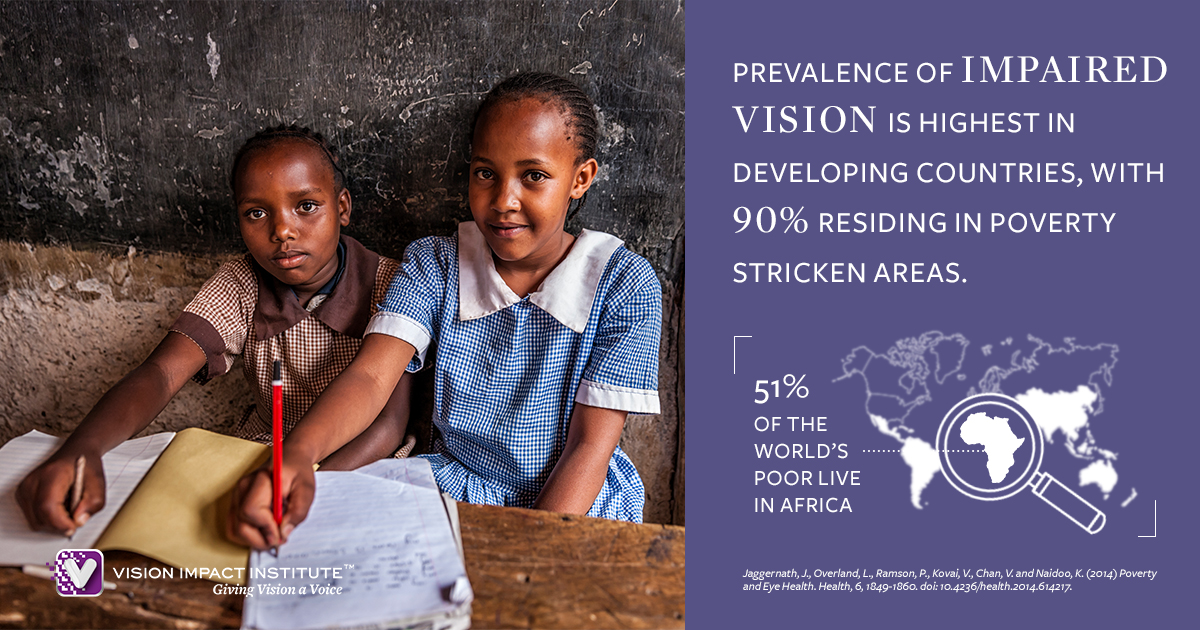Join a powerful, unprecedented alliance for better eye health for all.
Join IAPB-
Choose an alternate language here
For Africa Day, Kristan Gross, Global Executive Director, Vision Impact Institute writes about eye health in Africa and the impact of Uncorrected Refractive Errors in children.

As a child, I was fortunate to have family friends who served as missionaries in numerous locations around the world. Perhaps this early introduction to a global mindset laid the foundation for the role I hold today. I remember quite fondly the moments shared with a family who served in Senegal, West Africa, and from an early age, I recall the draw I felt to this region of the world. Even now the call to Africa remains alive and, quite possibly, stronger than ever.
Today, more than three billion people live on less than US $2 per day, with the population of Africa accounting for more than 50 percent of the world’s poor. Additionally, the majority of African countries are experiencing a critical health workforce shortage including eye health professionals, adding to the 1.1 billion people around the world who do not have access to vision correction.
A recent study on Africa, Poverty and Eye Health (2014), suggests that “the relationship between poverty and eye health can be interpreted as being two-fold, in the sense that poverty may be a cause of poor eye health and poor eye health may lead to or deepen poverty.” This paper also indicates that while this correlation is clear, there must be more research done to truly understand the depth of the relationship between poverty and eye health, especially in Africa.
We know vision health affects all areas of life, so what could this mean to the people of Africa who have limited funds and limited access to vision care? If we take a deeper dive into the affects of poverty and eye health, we find this to be a multi-dimensional problem. When uncorrected vision affects everything from employment and material wealth to education and overall health – and that doesn’t even factor direct and indirect public costs from medical and related expenses or missed-earning potential – we realize the desperate need for intervention in order to break this cycle.
Africa boasts numerous countries with distinctly unique populations, but one thing is certain: vision problems are a common link across the continent. If we look at the overall population, the issue starts with children who have uncorrected refractive error and other vision issues that significantly impact school absenteeism and scholastic achievement. Eye health affects school participation, literacy levels, and future success. A recent study of 2,160 students in Egypt, showed that 38 percent had significant school absenteeism of three to four days per month and 22 percent had poor results on first term exams. If children can’t see, they can’t learn and will likely suffer economically in the future. Numerous studies show that refractive error is even more common in girls across Africa, which often leads to lower wages and fewer opportunities to break this poverty cycle.
With so many organisations focused on reducing avoidable blindness around the world, let’s be reminded that the second leading cause of blindness is simply uncorrected refractive error. Unlike infectious diseases for which we still strive for a cure, we have the solution for almost 80 percent of this affected population. What if breaking this poverty and eye health cycle hinges solely on expanding access to eye health services for school children?
When we intervene on behalf of Africa’s children today, we will be intervening for the success of the continent tomorrow.
The blog originally appeared on the Vision Impact Institute blog and has been reproduced with permission.
Picture from Vision Impact Institute website.
Liked it? Today is Africa Day and we have loads of posts for you. Here are some: